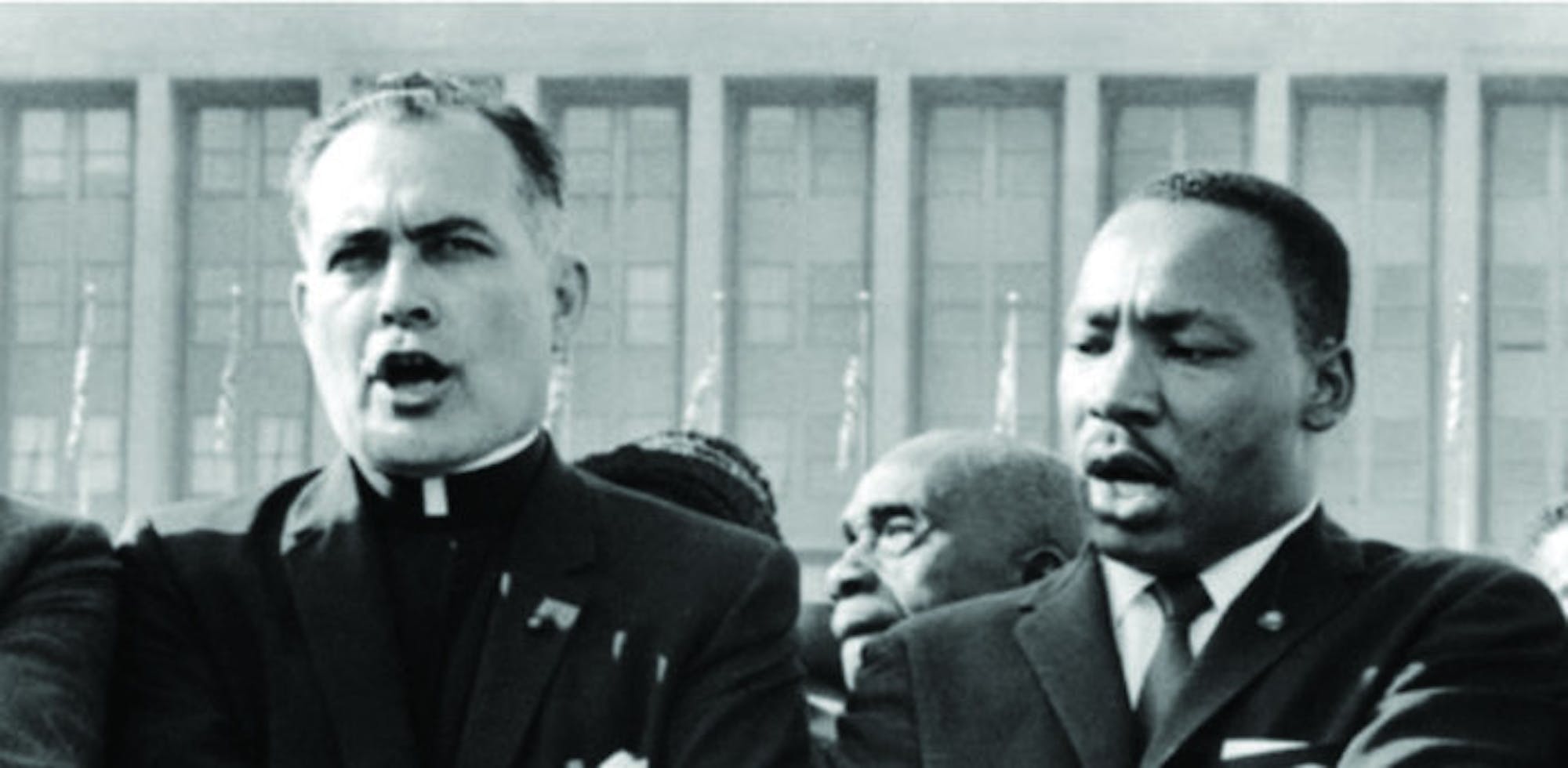In June 1964, University President Emeritus Fr. Theodore Hesburgh was sitting at his desk when he received a phone call. The civil rights movement was in full swing, and the Catholic priest’s services were needed at a rally in Chicago. According to a report from Notre Dame Magazine, then-Chicago mayor Richard Daley and a series of officials from the Catholic Church had all declined to attend.
“Hesburgh received a call at his office in the Main Building that he was needed to speak at the civil rights rally in Chicago,” Robert Schmuhl, an American Studies professor who has written a book about Hesburgh, said in an email. “Without hesitating, he decided to go, and his only question was to ask what time he had to arrive to participate.”
On June 21, 1964, Hesburgh took the stage at the Illinois Rally for Civil Rights at Chicago’s Soldier Field, according to a Notre Dame Archives webpage on Hesburgh’s life. Per the webpage, anywhere between 57,000 and 75,000 people attended the event. The rally took place at a tense moment in the civil rights movement: the same day the rally took place, three young activists were murdered in Mississippi while participating in “Freedom Summer,” an effort to register African American voters, according to the archives.
While at the rally, Hesburgh joined hands with Dr. Martin Luther King, Jr., who was also present at the rally. The result was the now-instantly recognizable photo of Notre Dame’s president singing while standing arm-in-arm with King. According to Notre Dame Magazine, the figures were singing “We Shall Overcome” when the photographer snapped the picture.
Hesburgh was no stranger to the civil rights movement — he was a longtime member of the federal government’s Civil Rights Commission, ultimately serving on the commission under four different presidential administrations.
“Hesburgh was one of the original members of the U.S. Civil Rights Commission that was established by President Dwight Eisenhower,” Schmuhl said. “He also served on the commission during the Kennedy, Johnson and Nixon administrations.”
While the photo is well-known today, it did not become famous until well after it was taken. Schmuhl said, to his knowledge, it is unknown who took the photo. Hesburgh himself was unaware the image even existed until years after the fact.
“[Hesburgh] was presented with the photo after a lecture he delivered at Emory University in Atlanta,” Schmuhl said. “Previous to that, he was unaware of the picture.”
Author Robert Schmuhl shares the story behind the iconic Hesburgh-King photo
Rev. Theodore Hesburgh stands arm-in-arm with Martin Luther King Jr., both singing in what is now an iconic image of the two men participating in a march.









